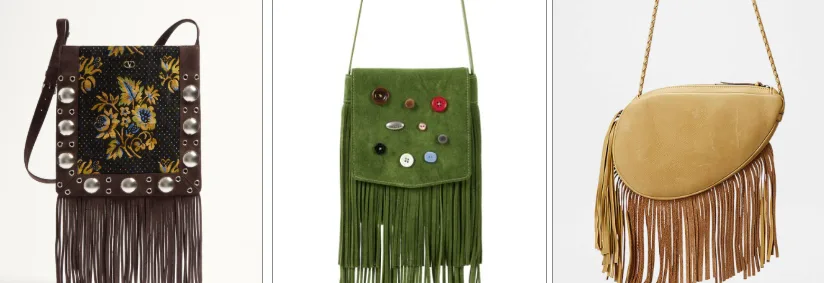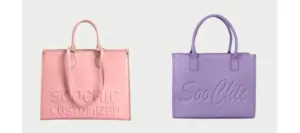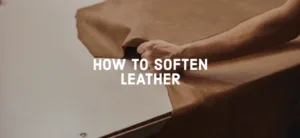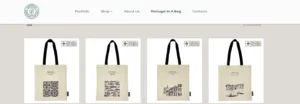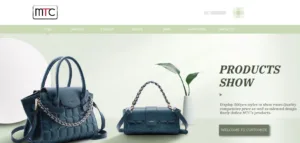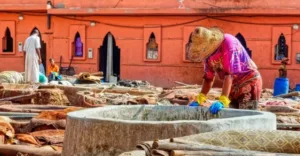Leather fringe bags have long been a favorite in handbag design, known for their unique movement and stylish appeal. Whether it’s a lightweight everyday tote or a vintage-inspired shoulder bag, fringe details add layers of texture and a distinctive flair to any outfit. With the rise of DIY culture, more craft enthusiasts are eager to create their own leather bags, combining creativity with practicality. By making your own bag, you can learn essential leather cutting, fringe design, and sewing techniques, while crafting a one-of-a-kind piece that reflects your personal style.
Choosing the right materials and craftsmanship is crucial for achieving professional results. Sunteam is a leading custom leather fringe bag manufacturer for bag brands, specializing in high-quality fringe techniques and meticulous bag production. With extensive experience in OEM leather fringe bag production and a reputation as a leather tassel bag factory, Sunteam provides brands with comprehensive support—from design guidance and sample creation to full-scale production. Whether it’s precise handling of partial fringe details or ensuring the overall durability of the bag, Sunteam guarantees every piece is both beautiful and functional, allowing your DIY inspiration to shine with professional-quality results.
Through this DIY leather bag tutorial, you’ll learn how to create a leather fringe bag from scratch, master essential leather crafting techniques, and discover some professional tips from an expert factory, so your handmade bag is both creative and expertly crafted.
Contents
Step 1: Gather Materials and Tools
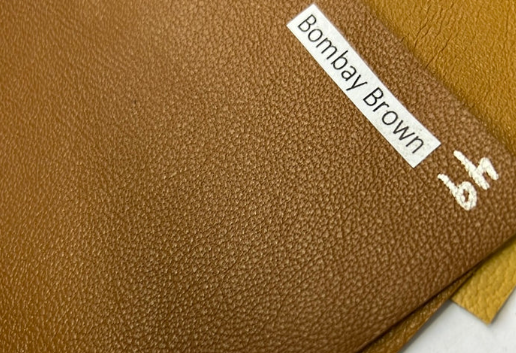
Collect high-quality leather or PU leather, pre-cut fringe strips, sewing thread or adhesive, scissors, a ruler, and a leather punch.
Data point: For a standard medium-sized bag, you may need around 0.5–0.8 square meters of leather and 10–15 fringe strips of 20–25 cm each. Using premium leather ensures durability and smooth fringe flow. Working with an experienced manufacturer can also provide access to professional-grade materials and guidance.
Step 2: Design and Measurement
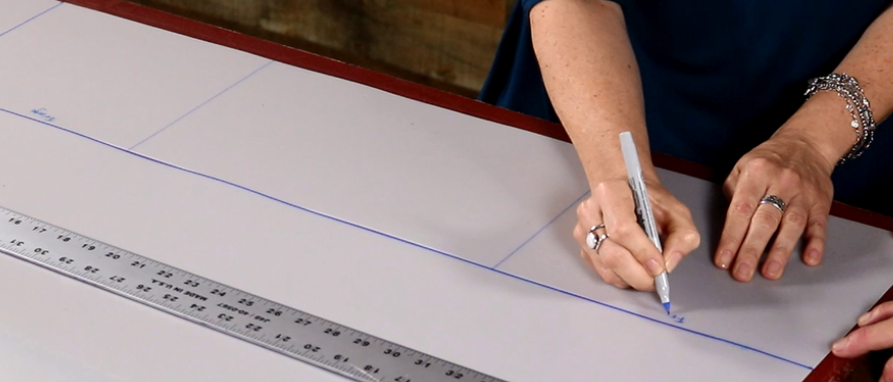
Plan the bag layout and decide where to place the fringe—on the flap, along the edges, or on the straps. Measure carefully for balance and symmetry.
Data point: Keep a consistent spacing of 1–1.5 cm between each fringe strip to ensure a clean and professional look. Proper planning ensures both aesthetic appeal and functional strength. Professional bag makers often provide guidelines for optimal fringe density.
Step 3: Cut the Fringe
Cut the leather into uniform strips according to your design. Arrange multi-layered fringe strips by length. Treat edges carefully to prevent fraying or cracking.
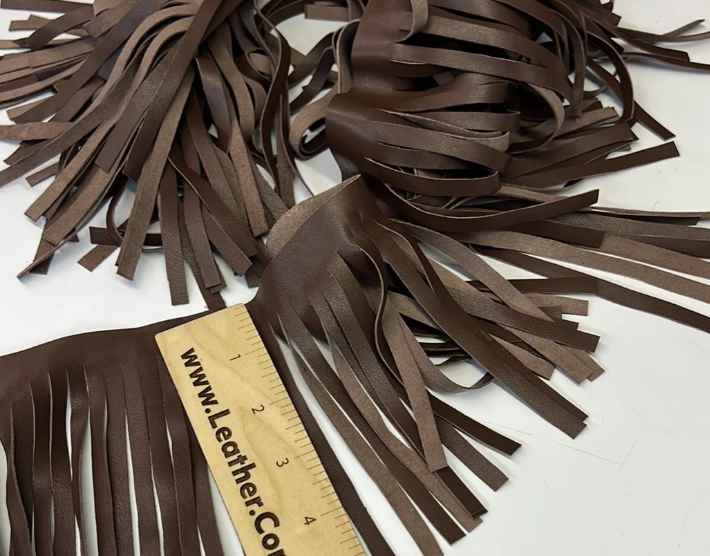
Data point: Standard fringe width ranges from 0.5–1 cm, and for layered designs, consider 2–3 layers with staggered lengths to create depth. High-quality cutting is essential to achieve a polished appearance similar to professional leather bag production.
Step 4: Attach the Fringe
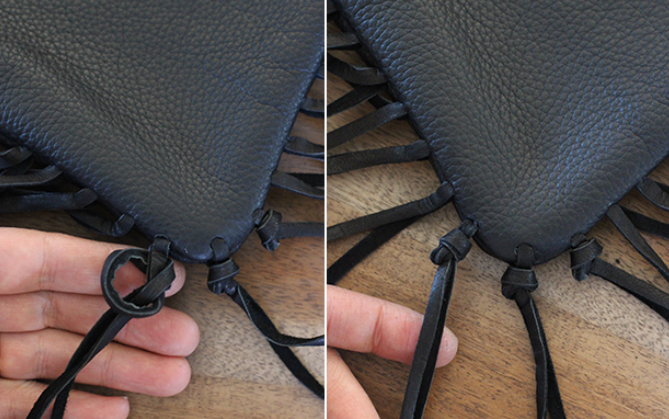
Secure the fringe to the bag with hand stitching, machine stitching, or adhesive for non-load-bearing areas. For removable designs, loops or small buckles can be used.
Data point: Use 2–3 stitches per centimeter for machine stitching to ensure durability. Maintain consistent direction and spacing for a neat finish, as seen in professional OEM leather fringe bag production.
Step 5: Finishing Touches
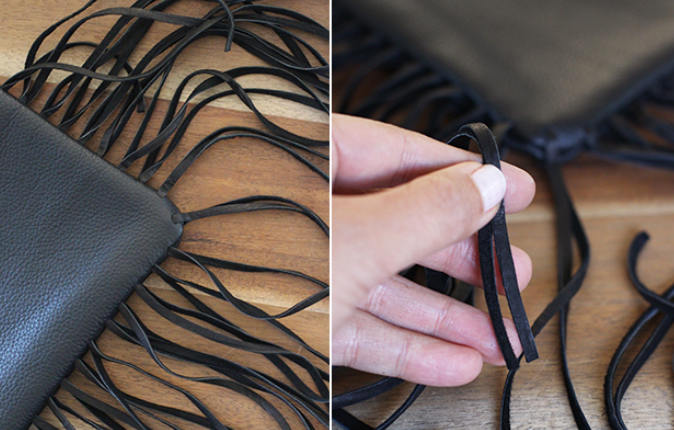
Trim fringe ends so they are uniform, comb strips to prevent tangling, and reinforce edges with extra stitching or leather padding if needed.
Data point: Fringe ends should be within 1–2 mm of each other to maintain uniformity. Proper finishing improves longevity and reflects the attention to detail of high-quality leather tassel bag factories.
Step 6: Styling and Application
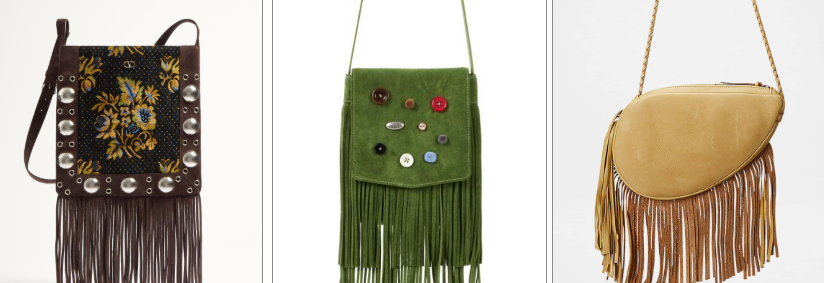
Once completed, the custom leather fringe bag can be styled as a tote, shoulder bag, or custom mini handbag. Experiment with layered colors or multiple fringe tiers.
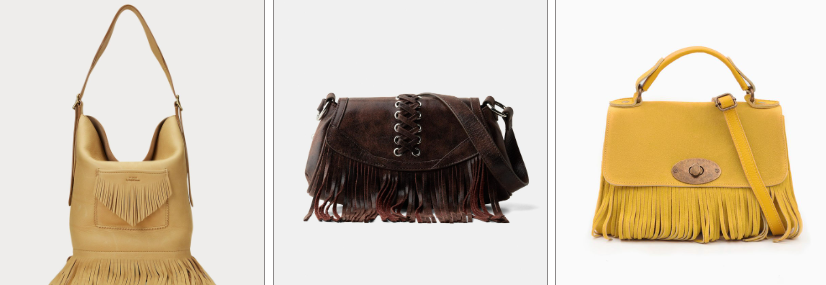
Data point: Multi-layer fringe designs can use 2–3 different leather tones, creating visual depth and a premium appearance. Many brands work with manufacturers to scale these designs into full collections while maintaining craftsmanship.
DIY vs Custom Leather Bags – Expert Insight
As leather crafting expert Anna Liu puts it, “Making your own fringe bag is like cooking your favorite meal from scratch—you control every ingredient, spice, and garnish. Custom bags, on the other hand, are like dining at a gourmet restaurant: the chef has perfected the recipe, but you can still request minor tweaks.”
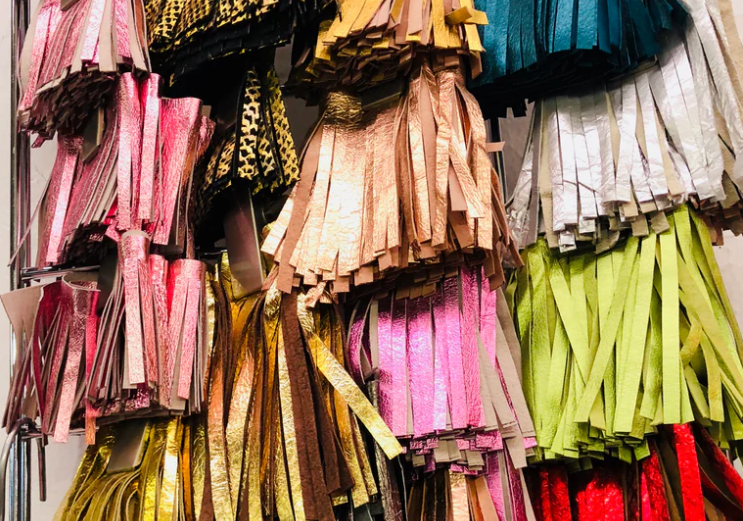
DIY leather bags let you experiment freely with fringe length, placement, and color combinations. You learn essential bag crafting techniques and gain a deep appreciation for each stitch, cut, and detail. It’s hands-on, creative, and highly personal—your bag becomes a true reflection of your style and effort. However, it requires patience, precision, and sometimes a little trial-and-error to achieve a polished look.
Custom leather bags, especially from professional bag manufacturers like Sunteam, offer precision, durability, and large-scale bag production advantages. Brands benefit from OEM leather fringe bag production and high-quality leather tassel bag factory expertise, achieving consistent quality across hundreds or thousands of units while saving time and reducing errors. The trade-off? Less personal experimentation, but much faster delivery, cost efficiency, and uniformity for big orders.
In short, DIY is the adventurous road trip where you pick every turn, while custom production is the luxury train ride with expert guides ensuring you reach your destination perfectly and on a large scale—either way, a stylish fringe bag awaits at the end of the journey.
Conclusion
Creating a leather fringe bag combines creativity, skill, and attention to detail. By following the step-by-step guide, you can craft a unique bag that reflects your personal style while learning essential leather bag crafting techniques. DIY projects allow you to experiment with fringe placement, length, and layering, resulting in a truly one-of-a-kind accessory.
For brands and designers seeking professional results, Sunteam stands out as a handmade leather fringe bag factory and leather fringe handbag manufacturer, offering comprehensive leather bag custom production and ODM services. Their expertise as a professional leather bag factory ensures precise construction, high-quality materials, and consistent finishes, making them the ideal partner for large-scale production or custom designs.
Whether you’re exploring DIY or considering custom production, the journey of creating a leather fringe bag is both rewarding and inspiring.

